Wild Clay Process
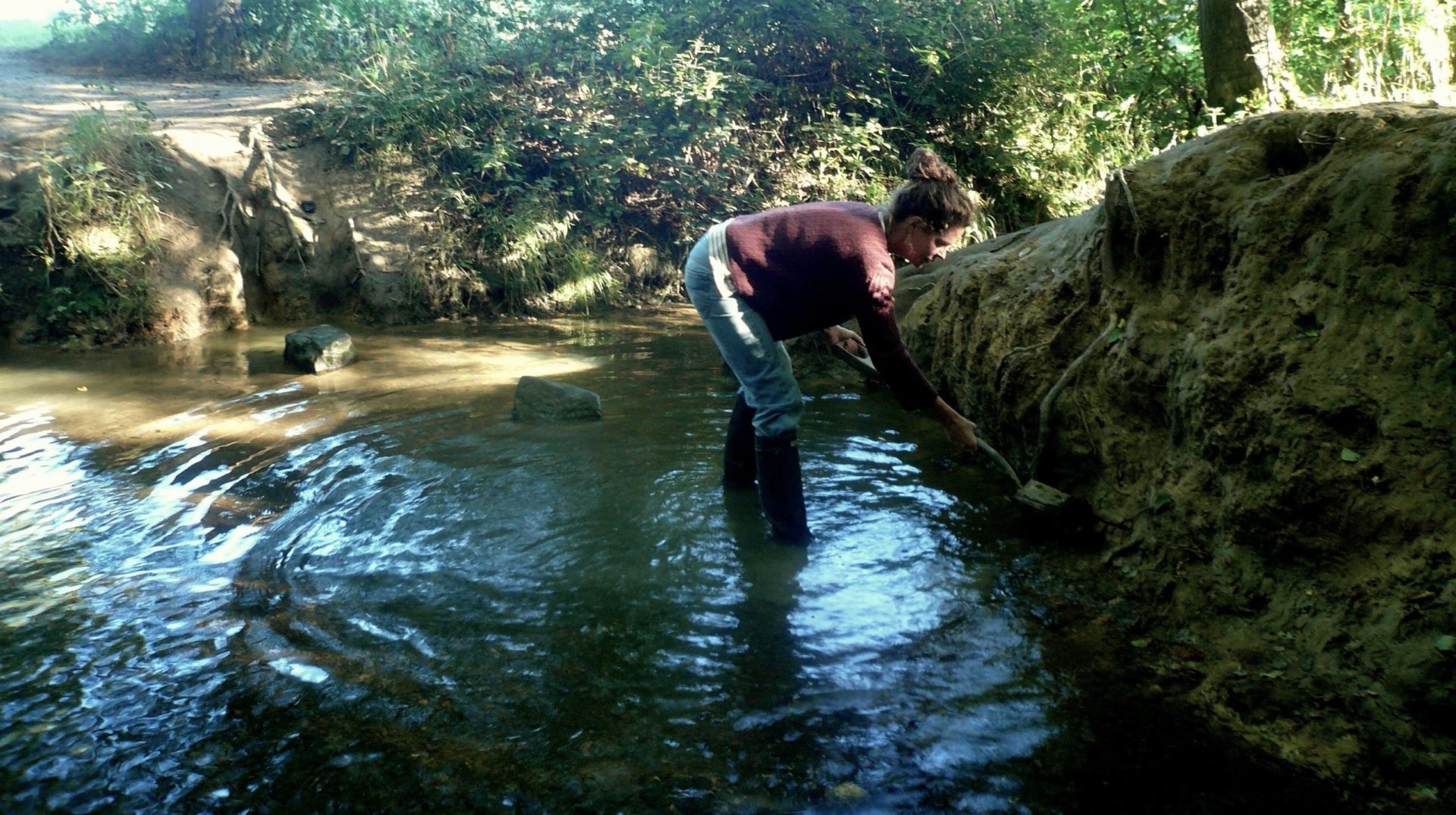
I use wild clay which I dig near my home in Sussex, in the woods. It’s Weald Clay here, an iron rich earthenware. This area was known for its medieval potteries and also brick and tile making (still taking place in some areas today).
I dig small amounts of the woodland clay at a time, with minimal impact on the land. I always make offerings before digging: a gesture of reciprocity.
I use 100% wild clay (no commercial clay added) to honour the importance of connecting to place. And because of the rich texture wild clay has when fired. It gives a natural vibrancy, and I leave some surface marks from the making process, traces of the maker’s hands.
Pots are fired in the same woods either in an open fire or in a clamp kiln, a temporary kiln structure, leaving no trace when I’m finished. Each piece unique, each connected directly to the land. Echoes of ancient processes.
What does it mean to have an intimate connection to the plants, seasons and land where we find ourselves? There is an embodied process in harvesting and using foraged materials. A rhythm and relationship inherent in the act of making. It’s a counterpoint to the pull of our increasingly digitalised and disconnected lifestyles.
Know the ways of the ones who take care of you. Introduce yourself. Be accountable as the one who comes asking for life. Ask permission before taking. Abide by the answer. Give thanks for what you have been given. Give a gift, in reciprocity, for what you have taken.
Robin Wall-Kimmerer from ‘Braiding Sweetgrass’
Read more about my process: about how I forage for plant fibres and also how I forage for bark.
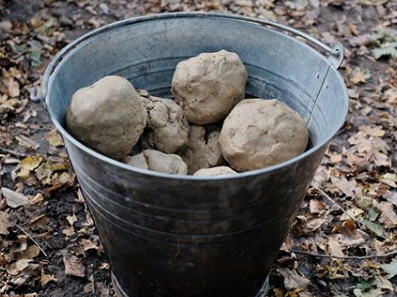
Iron rich clay dug from the Sussex woods.
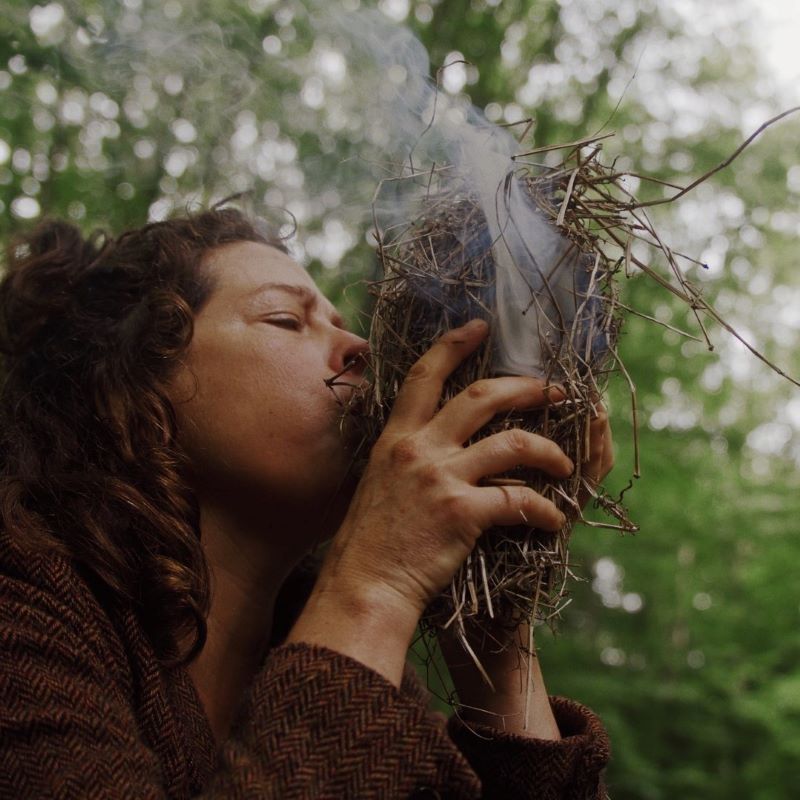
Firings are all done out in the woods, lighting the fire using ancient techniques of flint and steel, catching a small spark on wild clematis bark. Coaxing the fragile ember into a larger blaze, feeding it with local oak wood.
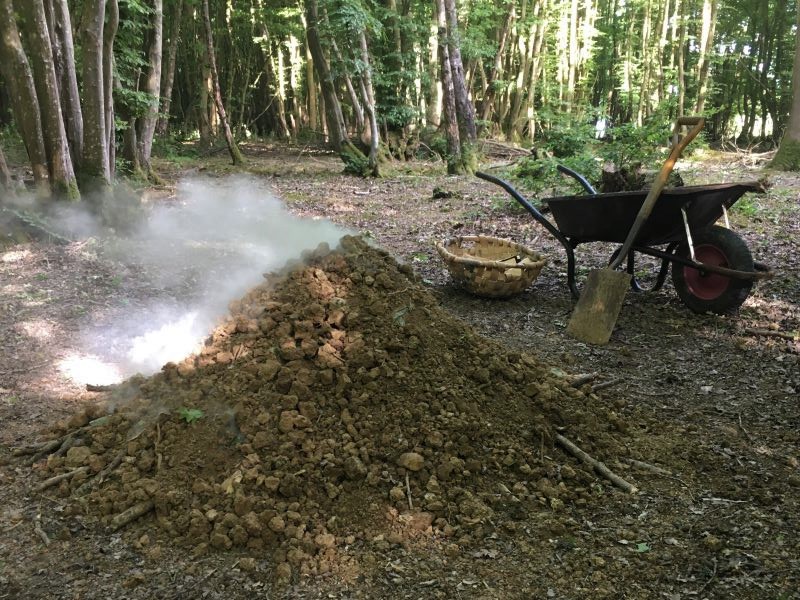
Clamp kiln firing: a temporary structure of wood and earth to insulate the firing. I stay in the woods to watch over it burning for a day and a night.
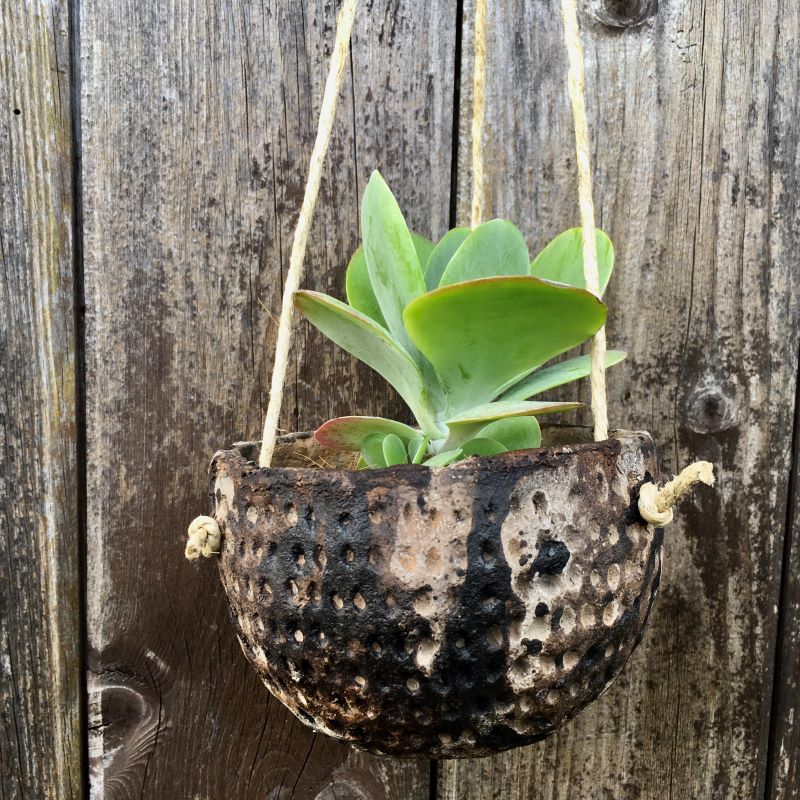
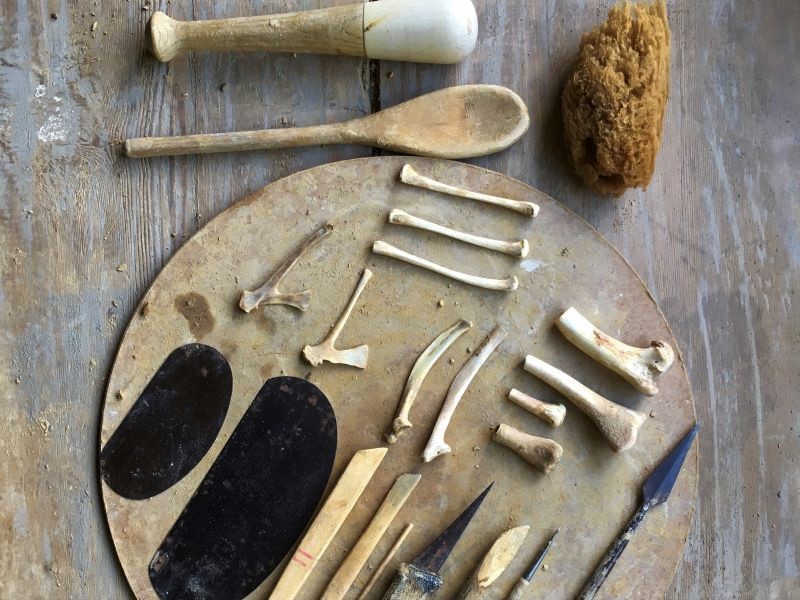
Bone & wood tools. I hand-build all my pieces in the studio (no potters wheel), and evidence of the hand-building process are left visible on the surface of each piece.
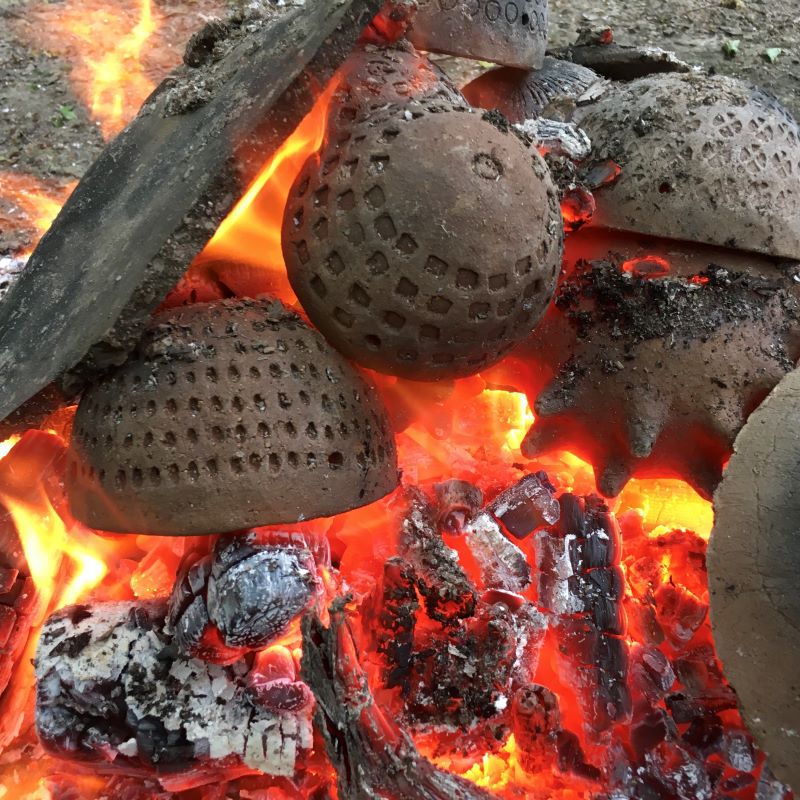
Open firing: a short, fast firing, the original, ancient way. It’s alchemy visible as the clay, red hot, transmutes into ceramic.
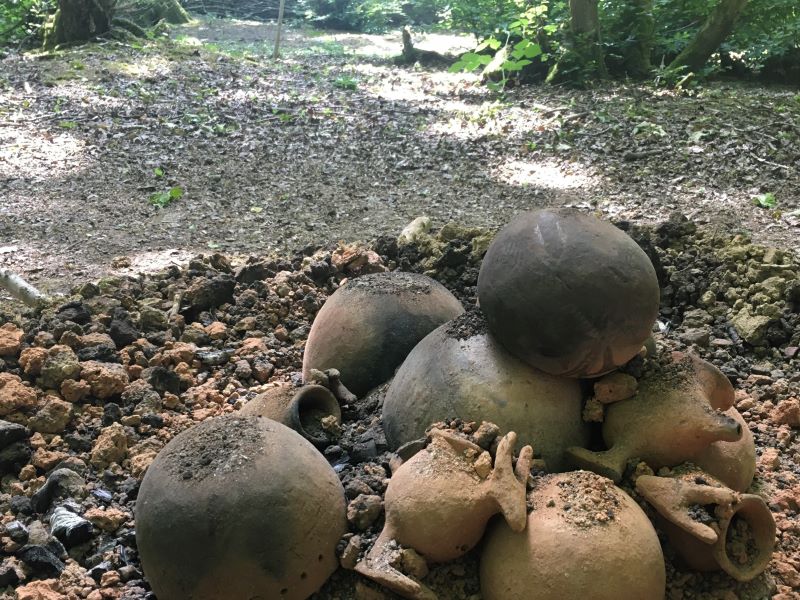
Textures of wild clay, open-fired and clamp kiln-fired. Smoke clouds imprinted on the pot surface from the fire; every pot is unpredictable, every firing a leap of faith.
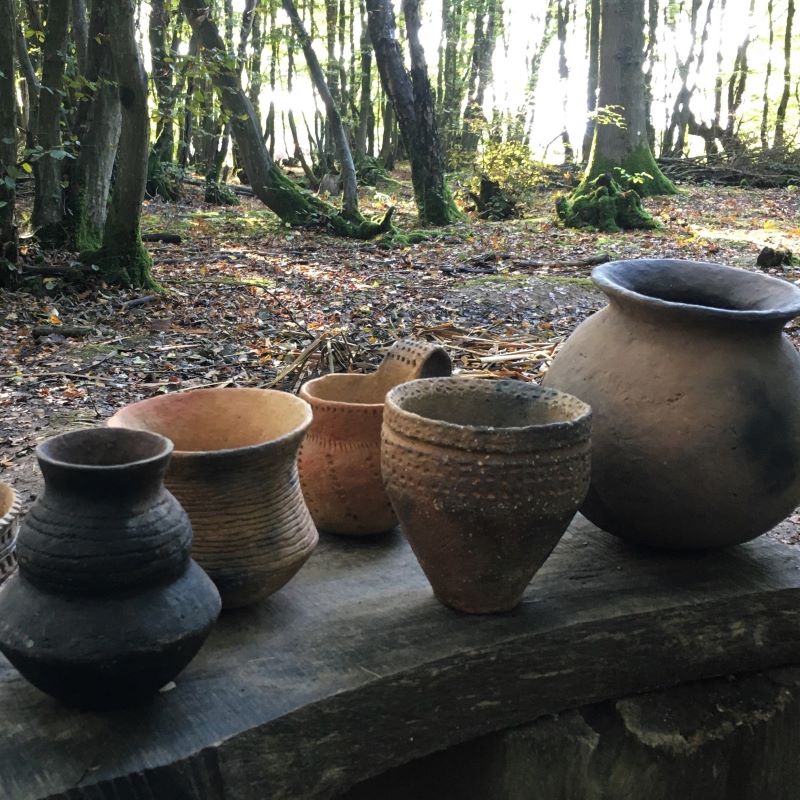
.